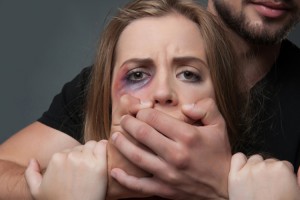The notion of prostitution as a viable, enticing career choice for a girl in her mid-teens is preposterous.
For me, it’s as preposterous and factually wayward a notion as suggesting that the average Syrian parent, sat in a refugee camp in Turkey or Lebanon, fleeing war, is au fait with the intricacies of our social welfare system.
The fact, that on any given day, via one website which doesn’t merit the oxygen of identification, there are between 10 and 20 women in Waterford whose bodies are on sale for sex, is something which should concern those of us considered ‘right-minded’.
Prostitutes don’t pedal their wares on the old docks or street sides of our city. It doesn’t work that way.
And, as Rebecca Beegan of the Men’s Development Network (MDN) pointed out to me, publications running photos of shapely, fishnet-tighted thighs are focusing too much on the act, as opposed to the crime. After all, there’s nothing sexy about paying for sex.
As highlighted in last week’s edition, a comprehensive 2009 report on the Irish sex trade concluded that one in 15 men in this State have, on at least one occasion, paid for sex. That same report (‘Globalisation, Sex Trafficking and Prostitution: the Experiences of Migrant Women in Ireland’) estimated that there are between 800 and 1000 ‘indoor’ prostitutes in Ireland at any one time.
Research conducted by the Dublin-based Women’s Health Project, later made available to the Immigrant Council of Ireland, revealed further disturbing findings, namely:
• 37 per cent of prostitutes had Bacterial Vaginosis,
• 31 per cent had Thrush
• 22 per cent had Hepatitis A
• 20 per cent had Hepatitis B
• 14 per cent had Chlamydia
• 6 per cent had Cervical Cell Abnormality and
• 14 per cent had vaginal/genital warts.
That this is a migrant-related issue is undeniable given that the 2009 Globalisation Report estimated that 93 per cent of prostitutes in the State were non-Irish. And that this is a life and death issue is equally undeniable since, as stated by Rebecca Beegan and MDN Chief Executive Alan O’Neill, “the death rate among prostitutes (is) 17 times higher than that of the age-matched general female population”.
With Justice Minister Frances Fitzgerald expected to publish a new Sexual Offences Bill within the next three weeks, the MDN is currently highlighting the need to “wreck the business model for pimps and traffickers working throughout Ireland”.
And the changes it is seeking in the law may well lead to one of instances where TDs and Senators think of the greater good as opposed to kicking another political football.
Through the ‘Turn Off The Red Light’ campaign, the MND and 70 other organisations around Ireland, including medical professionals, trade unionists, employers and the survivors of prostitution, have sought “to change the focus of the law from the seller of the sex to the buyers”.
In other words, as the MDN’s recently published statement puts it, to turn the spotlight on “those whose actions have brought pimps and traffickers into our communities”.
The statement adds: “We know from research…that poverty, homelessness, drug addiction, sexual abuse and human trafficking are just some of the entry routes into prostitution. Regardless of the physical location, indoor or outdoor, violence, abuse and rape are inherent in the sex trade…(and) the demand for women and children is evident in Ireland as there were 48 suspected victims of human trafficking found last year who were destined to be used for the purposes of exploitation in the sex trade.”
Rebecca Beegan hopes that creating a greater level of public awareness about the reality of prostitution, and the levels of violence and suffering it so regularly inflicts upon vulnerable women, can lead to a “welcome and necessary change in the law”.
Speaking in her O’Connell Street office, she added: “The old saying about prostitution being the oldest profession, to me, is way off the mark – it almost glamourises something which has no glamour about it whatsoever. This is a daily horror for those trapped in the sex trade.
“Prostitution is the oldest oppression, in my view. It leads young women brought up in a cycle of poverty into another, all the more harrowing and debilitating a cycle – being pimped out, being sold as a product that’s consumed several times a day, and that in turn leads in so many instances to illness, to substance abuse and addiction, to being raped.”
As the MDN statement points out: “Prostitution is not a job that a woman chooses: for the majority of women, they enter into prostitution because they have no other options. We must also provide assistance to women who need support to exit prostitution and we must increase our own awareness of prostitution and sexual exploitation in this country.”
It seems pretty clear, even to those of us only furnished with the factual reality of prostitution in recent weeks, that the person acquiring sex ought to be criminalised, as opposed to the person he’s bought for sex.
“I’ve spoken to women who carry anaesthetic in their handbag every day knowing what they’re going to experience,” said Rebecca Beegan. “And that doesn’t apply to just one day. Just imagine that being a consideration you’d have to give when planning your day. Just think about that.”
The MDN statement contends that €250 million is extracted from Ireland annually by pimps and traffickers. Those profiting from sex ought to be hamstrung by the law, and those who pay for sex ought to face stern criminal sanctions. So let’s hope common sense prevails here, and that the MDN’s invaluable contribution to this debate shall not have been in vain.


